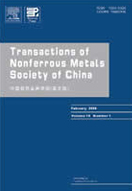Additive manufacturing of high-entropy alloy composites: A review
(1. State Key Lab for Materials Processing and Die & Mold Technology, School of Materials Science and Engineering, Huazhong University of Science and Technology, Wuhan 430074, China;
2. Department of Mining and Petroleum, Faculty of Engineering, Al Azhar University, Qena, Egypt)
2. Department of Mining and Petroleum, Faculty of Engineering, Al Azhar University, Qena, Egypt)
Abstract: High entropy alloy composites (HEACs) are a new class of metal matrix composites involving a second phase, such as carbides, borides, and nitrides in high entropy alloy matrices. In recent years, HEACs have attracted wide attention due to their outstanding properties. However, the preparation of HEACs encounters great challenges when using conventional casting approaches due to serious composition segregation. 3D printing techniques solved this problem and produced components with complex geometry. Therefore, 3D printing techniques have been applied to fabricating HEAC components, and a few works on this topic have been published. To accommodate the rapid development of 3D printing of HEACs, we present a state-of-the-art overview of the recent progress of HEAC 3D printing. The article begins with an introduction of HEAs and 3D-printed HEACs. The processes of HEAC powders development, including gas atomization and mechanical alloying, are presented. The 3D printing processes of HEAC powders, such as powder bed fusion and directed metal deposition, and their microstructures are discussed. The mechanical properties of 3D-printed HEACs are discussed and compared with 3D-printed HEAs and their casting counterparts, and their hardness, resistance to wear, corrosion, and oxidation are discussed. Finally, new perspectives are outlined for future research.
Key words: high-entropy alloy; composite; additive manufacturing; reinforcement phase; microstructure; mechanical properties

